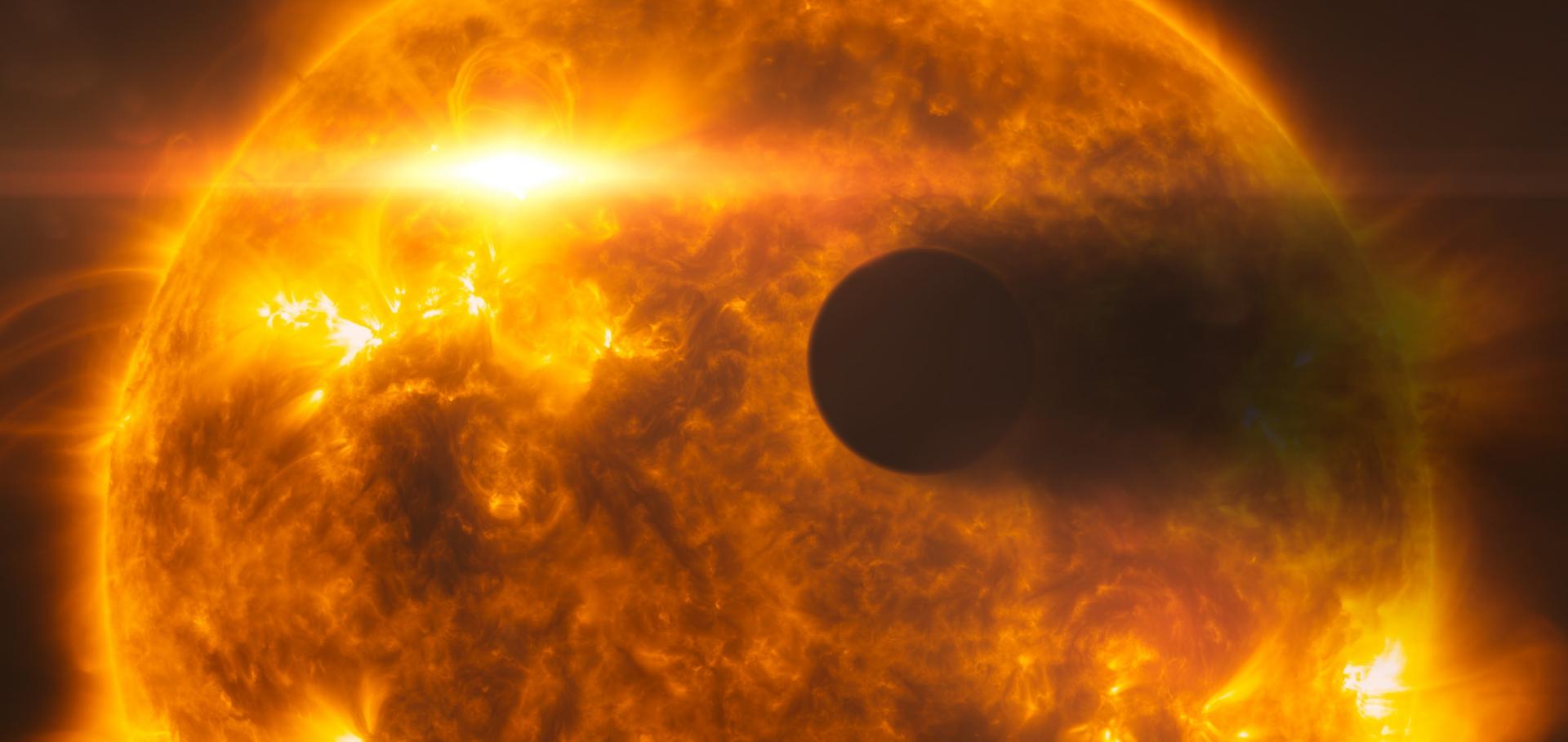Bayesian detection of planetary transits a modified version of the Gregory-Loredo method for bayesian periodic signal detection
Astronomy and Astrophysics 395:2 (2002) 625-636
Abstract:
The detection of planetary transits in stellar photometric light-curves is poised to become the main method for finding substantial numbers of terrestrial planets. The French-European mission COROT (foreseen for launch in 2005) will perform the first search on a limited number of stars, and larger missions Eddington (from ESA) and Kepler (from NASA) are planned for launch in 2007. Transit signals from terrestrial planets are small (ΔF/F ≃ 10-4), short (Δt ≃ 10 hours) dips, which repeat with periodicity of a few months, in time series lasting up to a few years. The reliable and automated detection of such signals in large numbers of light curves affected by different sources of noise is a statistical and computational challenge. We present a novel algorithm based on a Bayesian approach. The algorithm is based on the Gregory-Loredo method originally developed for the detection of pulsars in X-ray data. In the present paper the algorithm is presented, and its performance on simulated data sets dominated by photon noise is explored. In an upcoming paper the influence of additional noise sources (such as stellar activity) will be discussed.2.5-D retrieval of atmospheric properties from exoplanet phase curves: Application to WASP-43b observations
Abstract:
We present a novel retrieval technique that attempts to model phase curve observations of exoplanets more realistically and reliably, which we call the 2.5-dimension (2.5-D) approach. In our 2.5-D approach we retrieve the vertical temperature profile and mean gaseous abundance of a planet at all longitudes and latitudes \textbf{simultaneously}, assuming that the temperature or composition, $x$, at a particular longitude and latitude $(\Lambda,\Phi)$ is given by $x(\Lambda,\Phi) = \bar{x} + (x(\Lambda,0) - \bar{x})\cos^n\Phi$, where $\bar{x}$ is the mean of the morning and evening terminator values of $x(\Lambda,0)$, and $n$ is an assumed coefficient. We compare our new 2.5-D scheme with the more traditional 1-D approach, which assumes the same temperature profile and gaseous abundances at all points on the visible disc of a planet for each individual phase observation, using a set of synthetic phase curves generated from a GCM-based simulation. We find that our 2.5-D model fits these data more realistically than the 1-D approach, confining the hotter regions of the planet more closely to the dayside. We then apply both models to the WASP-43b phase curve observations of HST/WFC3 and Spitzer/IRAC (Stevenson et al., 2017). We find that the dayside of WASP-43b is apparently much hotter than the nightside and show that this could be explained by the presence of a thick cloud on the nightside with a cloud top at pressure $< 0.2$ bar. We further show that while the mole fraction of water vapour is reasonably well constrained to $(1-10)\times10^{-4}$, the abundance of CO is very difficult to constrain with these data since it is degenerate with temperature.CoRoT 223992193: Investigating the variability in a low-mass, pre-main sequence eclipsing binary with evidence of a circumbinary disk
Astronomy and Astrophysics Springer Verlag
Inferring probabilistic stellar rotation periods using Gaussian processes
Monthly Notices of the Royal Astronomical Society Blackwell Publishing Inc.
Abstract:
Variability in the light curves of spotted, rotating stars is often non-sinusoidal and quasi-periodic --- spots move on the stellar surface and have finite lifetimes, causing stellar flux variations to slowly shift in phase. A strictly periodic sinusoid therefore cannot accurately model a rotationally modulated stellar light curve. Physical models of stellar surfaces have many drawbacks preventing effective inference, such as highly degenerate or high-dimensional parameter spaces. In this work, we test an appropriate effective model: a Gaussian Process with a quasi-periodic covariance kernel function. This highly flexible model allows sampling of the posterior probability density function of the periodic parameter, marginalising over the other kernel hyperparameters using a Markov Chain Monte Carlo approach. To test the effectiveness of this method, we infer rotation periods from 333 simulated stellar light curves, demonstrating that the Gaussian process method produces periods that are more accurate than both a sine-fitting periodogram and an autocorrelation function method. We also demonstrate that it works well on real data, by inferring rotation periods for 275 Kepler stars with previously measured periods. We provide a table of rotation periods for these 1132 Kepler objects of interest and their posterior probability density function samples. Because this method delivers posterior probability density functions, it will enable hierarchical studies involving stellar rotation, particularly those involving population modelling, such as inferring stellar ages, obliquities in exoplanet systems, or characterising star-planet interactions. The code used to implement this method is available online.K2 photometry and HERMES spectroscopy of the blue supergiant rho Leo: rotational wind modulation and low-frequency waves
Monthly Notices of the Royal Astronomical Society: Letters Blackwell Publishing


